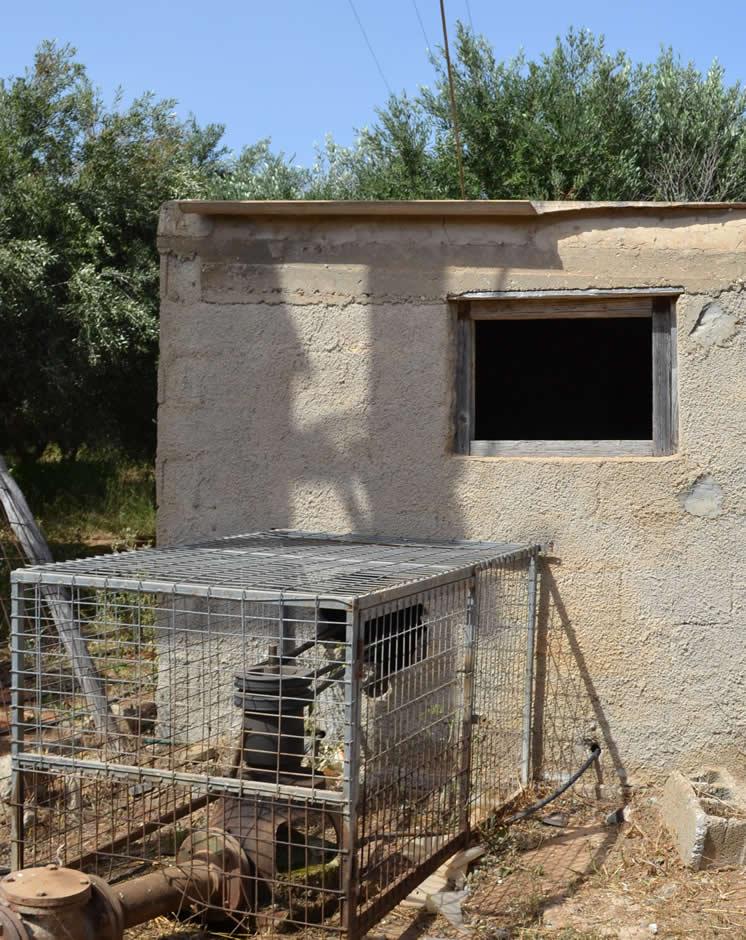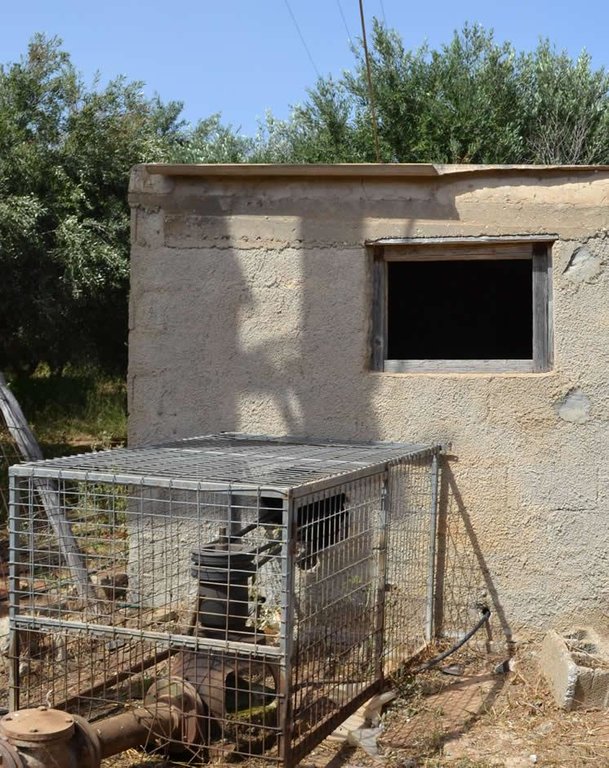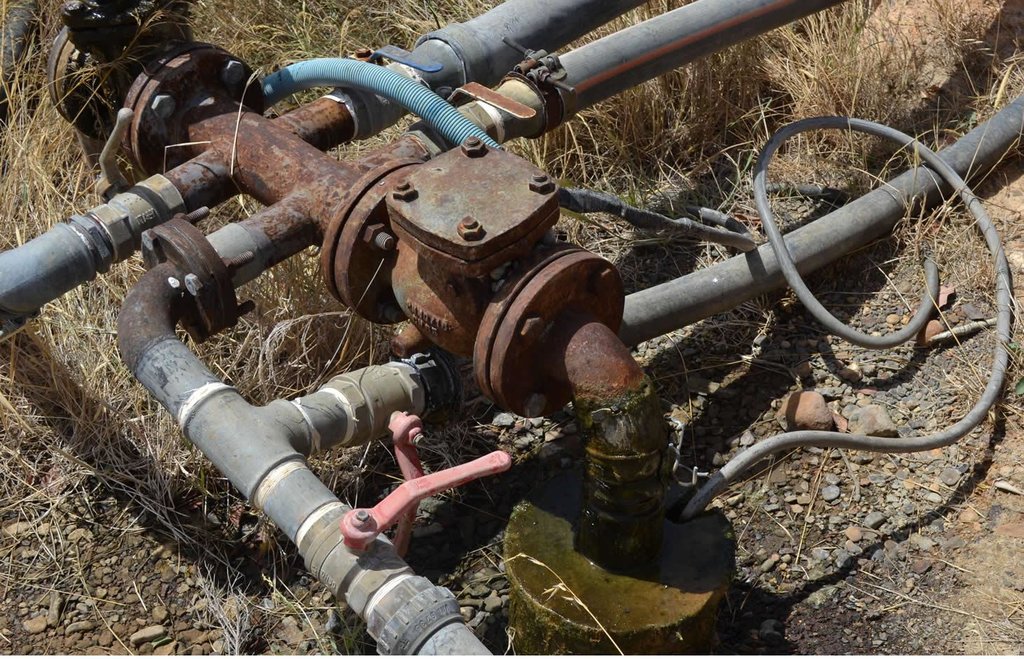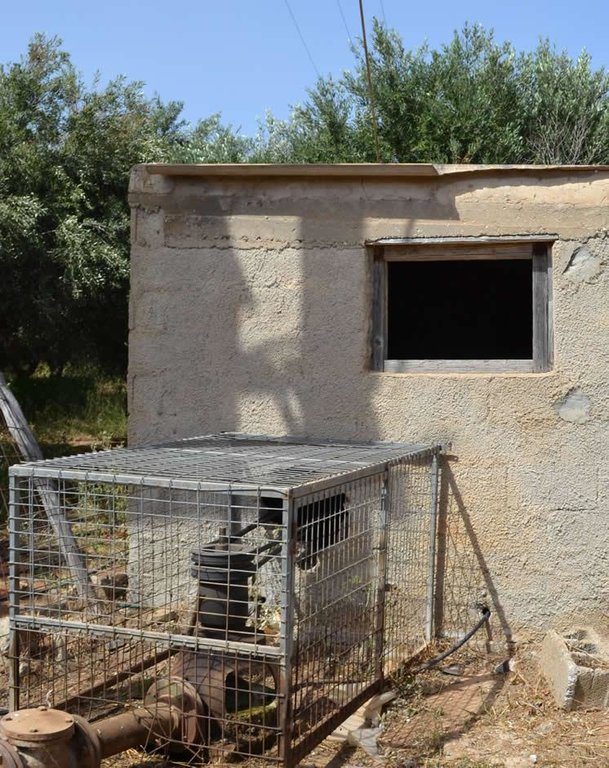Cooperative for Drilling and Exploiting a Private Water Well [Grèce]
- Création :
- Mise à jour :
- Compilateur : Ioannis Daliakopoulos
- Rédacteur : –
- Examinateur : Fabian Ottiger
Συνεταιρισμός με Σκοπό την Εγκατάσταση και Λειτουργία Ομαδικής Γεώτρηση
approaches_2619 - Grèce
Voir les sections
Développer tout Réduire tout1. Informations générales
1.2 Coordonnées des personnes-ressources et des institutions impliquées dans l'évaluation et la documentation de l'Approche
Spécialiste GDT:
Spécialiste GDT:
Nom du projet qui a facilité la documentation/ l'évaluation de l'Approche (si pertinent)
Preventing and Remediating degradation of soils in Europe through Land Care (EU-RECARE )Nom du ou des institutions qui ont facilité la documentation/ l'évaluation de l'Approche (si pertinent)
Technical University of Crete (Technical University of Crete) - Grèce1.3 Conditions relatives à l'utilisation par WOCAT des données documentées
Quand les données ont-elles été compilées (sur le terrain)?
13/12/2014
Le compilateur et la(les) personne(s) ressource(s) acceptent les conditions relatives à l'utilisation par WOCAT des données documentées:
Oui
2. Description de l'Approche de GDT
2.1 Courte description de l'Approche
A cooperative of land owners and at least one water rights owner established to jointly establish and manage a private freshwater well.
2.2 Description détaillée de l'Approche
Description détaillée de l'Approche:
Aims / objectives: The approach is implemented for deep water wells where installation costs are high. It provides an option for land owners to abandon their low quality shallow wells (such as those on coastal aquifers) for a better quality well (e.g. inland) located in a remote property. The objective of the cooperative is to share costs and risk while securing a sustainable water quality for its members.
Methods: A cooperative is formed with interested land users and shares are distributed depending on individual financial contribution to the drilling cost. Additional costs are either apportioned to coop members (e.g. common buffer tank) or managed individually depending on agreement. Apart from actual value, shares also represent the fraction of water rights of each member. Therefore, every member can consume up to their rights fraction or lease from other members who have consumed less that their rights fraction. Water consumption is usually measured indirectly through power consumption at the pump and a common log is kept to split bills power bills when issued.
Stages of implementation: Initially, a land owner secures a well installation permit from the Water Authority. If it is a requirement to form the cooperative as a legal entity then an advocate is requared. The coop elects 5 members to serve as president, treasurer, secretary and alternates. During the installation phase, members of the cooperative share costs according to their agreement. During the operation phase, costs are covered according to user consumption.
Role of stakeholders: The Water Managing Authority needs to provide a permit for the drilling and a geologist needs to oversee and sign for the drilling. Cooperative members need to be timely in their financial obligations in order to cover bills and maintenance costs on time in order to avoid interruptions of the water service for the entire group.
Other important information: This approach was documented within the scope of FP7 RECARE Project, funded grant agreement no 603498.
2.3 Photos de l'approche
2.5 Pays/ région/ lieux où l'Approche a été appliquée
Pays:
Grèce
Région/ Etat/ Province:
Heraklion
Autres spécifications du lieu :
Timpaki
2.6 Dates de début et de fin de l'Approche
Indiquez l'année de démarrage:
2005
2.7 Type d'Approche
- initiative/ innovation récente locale
2.8 Principaux objectifs de l'Approche
The Approach focused mainly on other activities than SLM (Securing good quality water at adequate quantities, reduce costs per capita)
The objective of the Approach are to share costs and risk while securing a sustainable water quality for its members. This way land owners have additional options for usign good quality water at an affordable cost.
The SLM Approach addressed the following problems: Lack of cash to invest
2.9 Conditions favorisant ou entravant la mise en œuvre de la(des) Technologie(s) appliquée(s) sous l'Approche
disponibilité/ accès aux ressources et services financiers
- entrave
High cost of a good quality (deep) well at a sufficient distance from the sea to prevent saltwater intrusion.
Treatment through the SLM Approach: Group of land users share the cost of drilling and become shareholders of the well. The amount of shares of each shareholder is proportional to the assets invested in the installation.
cadre juridique (régime foncier, droits d'utilisation des terres et de l'eau)
- entrave
New regulations discourage or ban the installation of new wells in order to regulate the quality and quantity of groundwater in the area. Also selling water without a permit lays at a legally gray area.
Treatment through the SLM Approach: Well shares (representing water rights) can be exchanged or rented among shareholders and sold to new shareholders. Therefore water rights can be distributed without new wells being drilled.
The existing land ownership, land use rights / water rights hindered a little the approach implementation At least one of the members of the cooperative needs to own land and user rights at a location suitable for drilling.
connaissances sur la GDT, accès aux supports techniques
- entrave
Water wells require an intermediate buffer water tank.
Treatment through the SLM Approach: In the case of a collective installation can be single (rather that each shareholder installing a separate water tank) thus reducing costs due to the economy of scales and saving space.
3. Participation et rôles des parties prenantes impliquées dans l'Approche
3.1 Parties prenantes impliquées dans l'Approche et rôles
- exploitants locaux des terres / communautés locales
Farmers, agriculturalists
- Spécialistes de la GDT/ conseillers agricoles
Water well drilling specialists
- gouvernement national (planificateurs, décideurs)
Water permits are eventually issued by the Water Authority
3.2 Participation des exploitants locaux des terres/ communautés locales aux différentes phases de l'Approche
| Participation des exploitants locaux des terres/ communautés locales | Spécifiez qui était impliqué et décrivez les activités | |
|---|---|---|
| initiation/ motivation | auto-mobilisation | Land users forming the cooperative |
| planification | auto-mobilisation | The board of the coop adjusts pricing and plans distribution networks in cooperation with the members. |
| mise en œuvre | auto-mobilisation | Construction work by land users who might have the resources to help. |
| suivi/ évaluation | auto-mobilisation | The board monitors water quality, water level and user consumption. |
| Research | aucun |
3.4 Prises de décision pour la sélection de la Technologie/ des Technologies
Indiquez qui a décidé de la sélection de la Technologie/ des Technologies à mettre en œuvre:
- principalement les exploitants des terres soutenus par des spécialistes de la GDT
Expliquez:
Land users take the initiative to form an unofficial cooperative or non-profit organization and share expenses to hire a water well drilling rig and specialists.
Decisions on the method of implementing the SLM Technology were made by mainly by SLM specialists with consultation of land users. Specialists will decide on the specifics of the well construction and assign pumping yields.
4. Soutien technique, renforcement des capacités et gestion des connaissances
4.1 Renforcement des capacités/ formation
Une formation a-t-elle été dispensée aux exploitants des terres/ autres parties prenantes?
Oui
Spécifiez qui a été formé:
- exploitants des terres
Formats de la formation:
- sur le tas
Thèmes abordés:
Use of the pumping system, pricing system, sustainable water use, legal issues.
4.3 Renforcement des institutions (développement organisationnel)
Des institutions ont elles été mises en place ou renforcées par le biais de l'Approche?
- non
4.4 Suivi et évaluation
Le suivi et l'évaluation font ils partie de l'Approche? :
Oui
Commentaires:
bio-physical aspects were monitored by land users through measurements; indicators: water salinity, pH, pollutants, level of the water in the well
economic / production aspects were monitored by land users through observations; indicators: consumption of water/power by each shareholder
There were no changes in the Approach as a result of monitoring and evaluation
There were no changes in the Technology as a result of monitoring and evaluation
5. Financement et soutien matériel externe
5.1 Budget annuel de la composante GDT de l'Approche
Si le budget annuel précis n'est pas connu, indiquez une fourchette:
- < 2 000
Commentez (par ex. principales sources de financement/ principaux bailleurs de fonds):
Approach costs were met by the following donors: local community / land user(s) (Establishing the cooperative as a legal entity): 100.0%
5.2 Soutiens financiers/ matériels fournis aux exploitants des terres
Les exploitants des terres ont-ils reçu un soutien financier/ matériel pour la mise en œuvre de la Technologie/ des Technologies?
Non
5.3 Subventions pour des intrants spécifiques (incluant la main d'œuvre)
- aucun
Si la main d'œuvre fournie par les exploitants des terres était un intrant substantiel, elle était:
- volontaire
Commentaires:
Equipment, construction and infrastructure are not part of the actual approach but of the technology facilitated by the approach.
5.4 Crédits
Des crédits ont-ils été alloués à travers l'Approche pour les activités de GDT?
Non
6. Analyses d'impact et conclusions
6.1 Impacts de l'Approche
Est-ce que l'Approche a aidé les exploitants des terres à mettre en œuvre et entretenir les Technologies de GDT?
- Non
- Oui, un peu
- Oui, modérément
- Oui, beaucoup
Est-ce que l'Approche a autonomisé les groupes socialement et économiquement défavorisés?
- Non
- Oui, un peu
- Oui, modérément
- Oui, beaucoup
Est-ce que l'Approche a amélioré les questions foncières et des droits d'utilisation qui entravent la mise en œuvre des Technologies?
- Non
- Oui, un peu
- Oui, modérément
- Oui, beaucoup
Did other land users / projects adopt the Approach?
- Non
- Oui, un peu
- Oui, modérément
- Oui, beaucoup
Did the Approach lead to improved livelihoods / human well-being?
- Non
- Oui, un peu
- Oui, modérément
- Oui, beaucoup
Did the Approach help to alleviate poverty?
- Non
- Oui, un peu
- Oui, modérément
- Oui, beaucoup
The approach provides the means to secure water availability and therefore sustain higher productivity.
6.2 Principale motivation des exploitants des terres pour mettre en œuvre la GDT
- augmenter la production
Production cannot be sustained by relying only on water from the coastal zone
- augmenter la rentabilité/ bénéfice, rapport coûts-bénéfices
Other solutions for securing acceptable quality water are less cost-effective
6.3 Durabilité des activités de l'Approche
Les exploitants des terres peuvent-ils poursuivre ce qui a été mis en œuvre par le biais de l'Approche (sans soutien extérieur)?
- incertain
Si non ou incertain, spécifiez et commentez:
While the approach is financially sustainable, it is uncertain whether water resources are managed in a sustainable way, since pumping limits are difficult to implement and are imposed in an empirical way.
6.4 Points forts/ avantages de l'Approche
| Points forts/ avantages/ possibilités du point de vue de l'exploitant des terres |
|---|
| Reduces start-up costs for well construction and subsequent risks, allows for deeper wells far from the salt intrusion zone thus providing a more sustainable water quality. |
| Points forts/ avantages/ possibilités du point de vue du compilateur ou d'une autre personne ressource clé |
|---|
| Provides the financial means to drill wells far from the salt intrusion zone, thus reducing the risk of enhancing salt intrusion. It is also a indirect way of reducing illegal pumping by consolidating water users to a more easily manageable and accountable entity. (How to sustain/ enhance this strength: Imposing pumping limits so that water use is sustainable. Provide motives to join cooperatives.) |
6.5 Faiblesses/ inconvénients de l'Approche et moyens de les surmonter
| Faiblesses/ inconvénients/ risques du point de vue du compilateur ou d'une autre personne ressource clé | Comment peuvent-ils être surmontés? |
|---|---|
| Once the well has been drilled, water quantities pumped are difficult to control. This can create tension among users but also lead to over-pumping. | A more transparent way of measuring can be implemented (e.g. metering per farm). This of course includes additional costs. Another option is to allow the Water Authority to take control of distribution within the private network and thus impose pumping limits (or at least be aware of the extent of the exploitation). |
7. Références et liens
7.1 Méthodes/ sources d'information
- visites de terrain, enquêtes sur le terrain
- interviews/entretiens avec les exploitants des terres
Liens et modules
Développer tout Réduire toutLiens
Aucun lien
Modules
Aucun module trouvé





